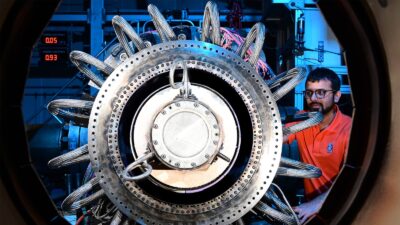If I suggested an investment yielding 12% in the current low-return environment, you’d think it was dodgy. But that’s what’s on offer from the handful of companies in the FTSE 100 trading on prospective price-to-earnings (P/E) ratios below 9, a 25% discount to the market average.
If the P/E is 9 then the earnings yield — EPS divided by the share price — is 11%. True, it’s not all paid out in cash but what you don’t get in dividends is reinvested in the company (or possibly used to buy back shares). Either way, your wealth should increase.
Among those cheap companies are three quality stocks: Shell (LSE: RDSB) (NYSE: RDS-B.US), Barclays (LSE: BARC) (NYSE: BCS.US) and Rio Tinto (LSE: RIO).
Shell
Shell is trading on a forward P/E of 7.9, and there’s a juicy yield of 5.4%, too. Why so cheap? Exxon and Chevron are on P/Es of around 11 and 10 respectively, and even BP — with the Deepwater Horizon liabilities still hanging over it — is on 8.5.
One reason may be its big bet on US shale gas, with the glut of supply making that look less economic now than was hoped for. But the big challenge facing all oil majors is replenishing their resources and, to my mind, a strong position in shale gas is a positive, even if it takes some years to work out. Oil majors plan investment over decades, and Shell’s US shale gas position should ultimately prove a great boost to reserves.
Barclays
It’s easier to understand why Barclays has a low rating, with a P/E of 8.1. UK banks have been battered by dire economic conditions and self-inflicted pain. Under new management, Barclays is in the midst of a turnaround plan intended to restore its reputation and financials by 2015.
That programme looks on track, with the bank confident of meeting the latest, harshest, and hopefully final re-calibration of capital requirements imposed by the Prudential Regulatory Authority. The shares are trading at just 0.7 times net asset value, a discount surely not justified by the quality of its assets. The bank has held on to a good position in investment banking and is investing in Africa for another dimension of growth. There are still risks in banks and the yield is just 2.6%, but it looks cheap.
Rio Tinto
Rio Tinto makes most of its money from iron ore, so softening Chinese growth and the end of the mining super-cycle have hammered its shares, which are on a prospective P/E of just 7.5. Like most of the sector, the new CEO is cutting costs and investment to eke out shareholder value, so mining investors are seeing better dividend yields than they have for a long time (4.5% for Rio).
Rio is one of the lowest-cost operators and its mines are mostly in stable regions: quality assets currently on offer at a bargain price.
Grabbing a bargain is always satisfying, but when it comes to shares it can make you seriously rich. There are tips aplenty about how to grow your portfolio in ‘Ten Steps to Making a Million in the Market’, a special Motley Fool report. You can download it to your inbox by clicking here — it’s free.
> Tony owns shares in Shell and Rio but no other shares mentioned in this article.







